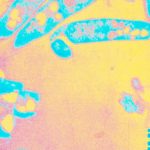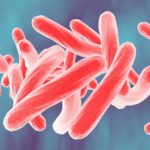Lien vers Pubmed [PMID] – 20042571
Lien DOI – 10.4049/jimmunol.0902854
J. Immunol. 2010 Feb; 184(3): 1436-44
Mycolactone is a diffusible lipid toxin produced by Mycobacterium ulcerans, the causative agent of a necrotizing skin disease referred to as Buruli ulcer. Intriguingly, patients with progressive lesions display a systemic suppression of Th1 responses that resolves on surgical excision of infected tissues. In this study, we examined the effects of mycolactone on the functional biology of T cells and identified two mechanisms by which mycolactone suppresses cell responsiveness to antigenic stimulation. At noncytotoxic concentrations, mycolactone blocked the activation-induced production of cytokines by a posttranscriptional, mammalian target of rapamycin, and cellular stress-independent mechanism. In addition, mycolactone triggered the lipid-raft association and activation of the Src-family kinase, Lck. Mycolactone-mediated hyperactivation of Lck resulted in the depletion of intracellular calcium stores and downregulation of the TCR, leading to impaired T cell responsiveness to stimulation. These biochemical alterations were not observed when T cells were exposed to other bacterial lipids, or to structurally related immunosuppressors. Mycolactone thus constitutes a novel type of T cell immunosuppressive agent, the potent activity of which may explain the defective cellular responses in Buruli ulcer patients.



